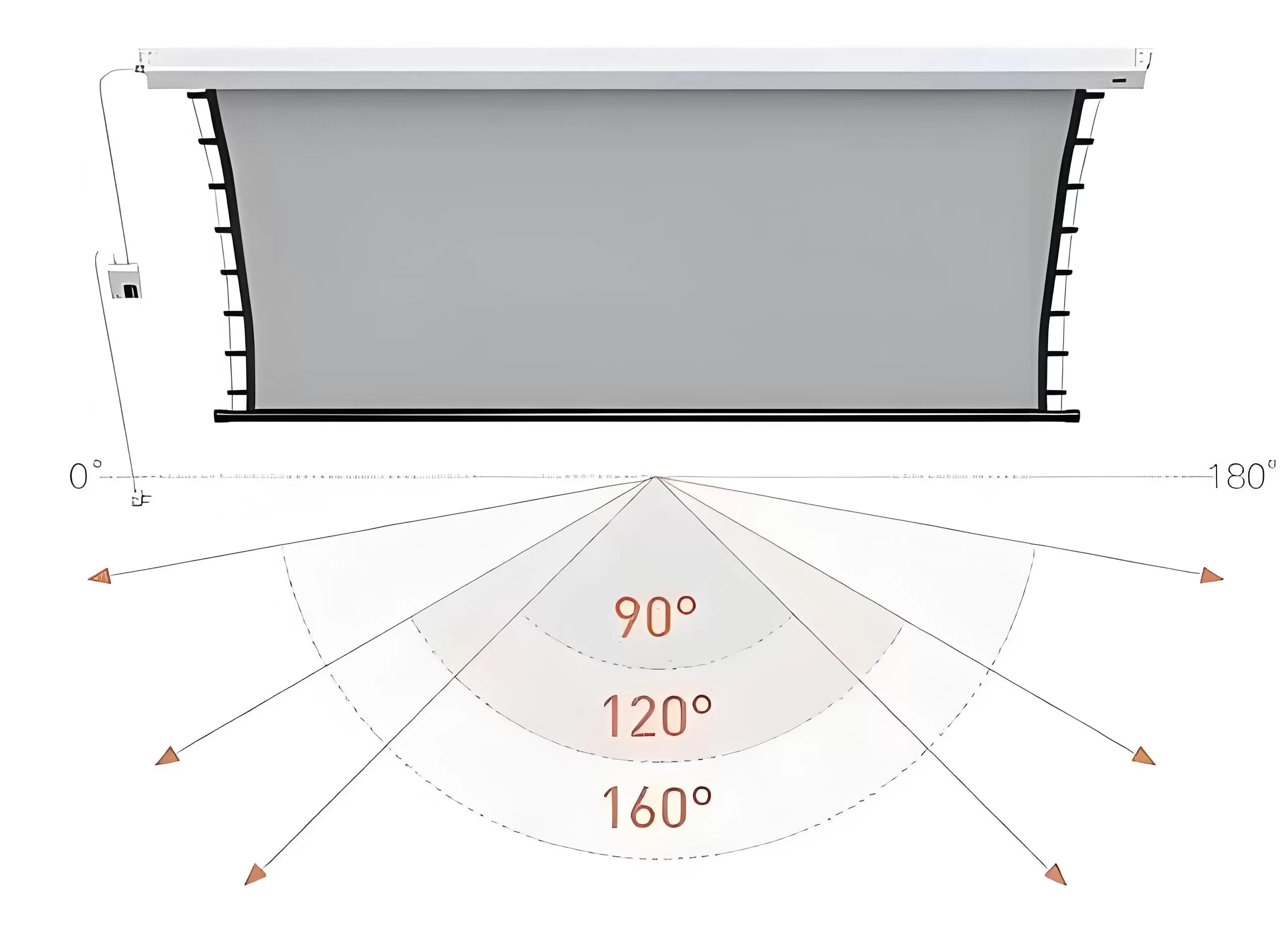Projection Screen Gain refers to the brightness of the reflection. It measures the screen material’s reflection at all angles. This is expressed in numbers. Projection Screen Gain is an important parameter to measure the ability of the screen to reflect light. It determines the brightness of the projected image. A higher gain makes the image brighter. However, the viewing angle becomes smaller. A lower gain affects the image brightness more with ambient light. But the viewing angle becomes larger.
Definition and calculation method of gain
Gain is calculated by comparing the brightness of the light reflected by the screen. This is done against the brightness of the light reflected by a completely diffuse scattering surface. A completely diffuse scattering surface has equal reflectivity in all directions. The gain of a projection screen is the ratio of the screen’s center point brightness. It is compared to the brightness of a completely diffuse scattering surface. This measurement is taken when light is projected perpendicularly to the screen under the same conditions.
Effect of gain on projection effect
Brightness of the image: The higher the gain, the brighter the image. This is suitable for darker environments. However, too high a gain will cause the middle of the image to be bright. The four corners will be dark, and the high-brightness part may lose its layering.
Observation angle: The higher the gain, the smaller the observation angle. This is suitable for small-scale viewing. When the gain is low, the picture is more affected by ambient light. However, the observation angle is larger, which is suitable for large-scale viewing.
Ambient light influence: Low-gain screens are easily affected by ambient light. High-gain screens can resist ambient light to a certain extent.
Application scenarios of different gain values
High-gain screen: This is suitable for darker environments. These environments include home theaters or dark rooms. It can provide brighter pictures and better contrast.
Low-gain screen: Suitable for brighter environments. These screens are ideal for daytime use. They can better resist the influence of ambient light and maintain the natural brightness of the picture.
- The significance and role of projection screen gain
The projection screen gain refers to the screen’s ability to reflect light. It is also one of the key factors affecting the projection effect. Generally speaking, if the gain value is higher, the screen’s reflective ability becomes stronger. This can make the projected picture brighter and clearer. When the same projector is projected on different screens, the brightness and clarity of the picture will also be different.
Usually, a low-brightness projection environment requires a screen with a higher gain. On the contrary, using a screen with a higher gain in a darker projection environment can cause “too high brightness.” “Snowflakes” will also affect the visual effect. Therefore, the projection environment should be considered when choosing a projection screen to avoid mistakes.
- Factors affecting the gain of a projection screen
Several factors affect the gain of a projection screen. They include the projection environment. These factors also include the brightness of the projector and the projection distance. The higher the brightness of the projector, the less important the gain of the projection screen. A screen with a higher gain can provide better projection effects when the projector brightness is low. It is also beneficial when the projection distance is far. - How to choose a suitable projection screen
- Consider the projection environment
When choosing a projection screen, the first thing to consider is the projection environment. The darker the projection environment, the higher the gain required. On the contrary, for a projection environment with a higher brightness, a screen with a lower gain should be selected.
- Choose the screen gain according to the brightness of the projector
The brightness of the projector is also a key factor in choosing a projection screen. Generally speaking, the brighter the projector, the more suitable the screen with a lower gain is. Conversely, when the brightness of the projector is low, a screen with a higher gain can provide better projection effects.
- Choose the screen gain according to the projection distance
The projection distance will also affect the choice of projection screen. If you are very close to the projection screen, you can choose a screen with higher gain. If you are far away from the projection screen, you should use a screen with lower gain. This helps avoid the problem of excessive brightness.
In short, choosing a suitable projection screen involves comprehensive consideration of several factors. These factors include the projection environment, projector brightness, and projection distance.

